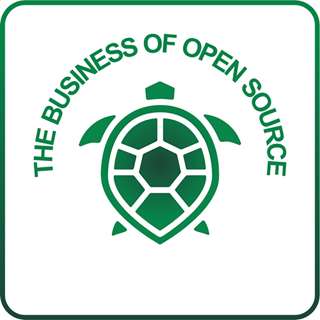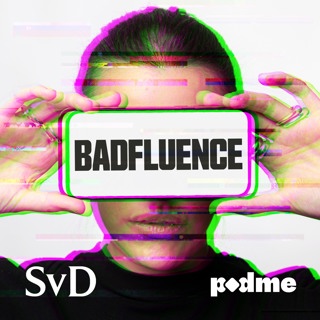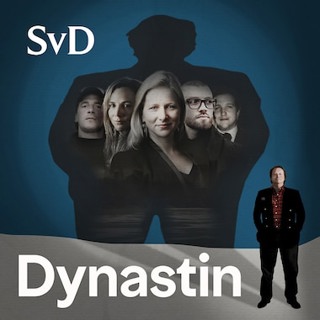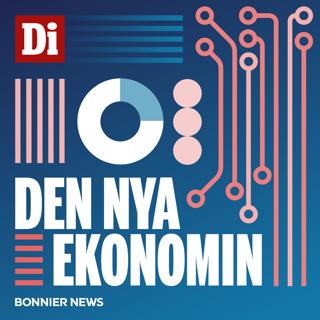
How the Department of Defense Uses Open Source with Rob Slaughter
Highlights:Open source software at the department of defense (1:36)Is there risk associated with using open source software in the department of defense? (5:30)Does the public sector contribute to and participate in open source communities? (9:13)Rob’s background and work experience (14:25)What led Rob to found Defense Unicorns (16:35)Rob’s focus on a specific niche in the founding of his company (17:33)How working with a fixed budget affects an open source company (19:33)Links:RobLinkedIn: https://www.linkedin.com/in/robertcslaughter/Company: https://www.defenseunicorns.com/
31 Aug 202228min

How Pantacor Fits into the Edge Continuum with Ricardo Mendoza
Ricardo Mendoza, founder and CEO of Pantacor, joins me for a chat at the Open Source Summit in Austin. Ricardo shares why he started Pantacor and describes the differences between IoT, edge, connected, and embedded devices. I ask him how Pantacor fits into the edge continuum, and he explains how Pantacor helps bring embedded devices into the future. Ricardo talks about the open source arm of Pantacor’s strategy, we discuss Pantacor’s unique interest in hardware versus primarily dealing with software, and Ricardo wraps up by sharing his advice for aspiring business owners! Highlights:Why Ricardo started Pantacor (1:19)Difference between IOT edge devices, connected devices, and embedded devices (2:17)How Pantacor fits into the edge continuum (4:49)Why are embedded systems lagging behind and how does that manifest? (6:22)How open source is part of Pantacor’s strategy (9:40)How aware are manufacturers of their operating systems and how Pantacor could help them? (13:35)Pantacor’s relationship with hardware (16:45)What was the inspiration for the founding of Pantacor? (20:11)The difference between cloud developers and their relationship with open source versus the relationship between embedded devices and open source (22:46)Is there a disadvantage to being based in Europe? (24:51)Advice for someone who wants to start a company or work with embedded devices (26:28)Links:Pantacorhttps://pantacor.com/https://pantavisor.io/Twitter: @pantahub
24 Aug 202229min

Open Source Licensing with Jeff Shapiro
Live from the Open Source Summit in Austin, I sit down with Jeff Shapiro, the License Scanning Manager for the Linux Foundation. Jeff begins by explaining what he does at the Linux Foundation, including ensuring that open source licenses are compatible and compliant. We discuss what license issues start-ups should be aware of, how to educate yourself on open source licensing, and when you should consult an expert. Jeff clarifies some confusion around dual licenses and explains the challenges of changing licenses on an open source project. Finally, we discuss the possibilities of disallowing specific uses through licensing and who can write a license. Highlights:Jeff talks about the legal and business risks of non-compliant open source licenses (3:09)License issues start-ups should be aware of (7:16)DCO (Developer certificate of origin) and understanding where code comes from (12:10)Educating yourself and others about open source licenses (13:04)Jeff talks about when you need to consult an expert (15:36)Jeff explains how he got into licensing as an engineer (17:23)Jeff discusses dual licenses (18:18)How hard is it to change licenses on an open source project (20:23)Jeff explains if it’s possible to disallow specific uses with your license (23:39)Links:JeffLinkedIn: https://www.linkedin.com/in/jeffcshapiro/Company: https://www.linuxfoundation.org/
17 Aug 202226min

From Open Source Project to Commercial Product with Webb Brown of Kubecost
Today I sit down with Webb Brown, CEO and cofounder of Kubecost. Kubecost provides real-time cost visibility and insights for teams using Kubernetes. Webb tells the story of building Kubecost, starting with the pain points that inspired the open source tool. He talks about the transition from an open source project to becoming a commercial company, and explains the decision to build a company with the same name and branding as the open source tool. Webb talks about Kubecost’s newest initiative, OpenCost, and concludes by offering some lessons and advice for anyone in the early days of an open source startup. Highlights:Webb explains what Kubernetes cost is (1:27)How the pain points addressed by Kubecost usually manifest (3:04)What the impetus was for building the Kubecost open source tool (5:30)The transition from open source to commercial (6:54)The relationship between a cost-cutting tool and open source (10:48)Kubecost’s new initiative, OpenCost (13:40)The decision to have a company with the same name as the open source project (18:55)Pros and cons that are unique to building an open source company (22:08)Advice for anyone in the early stages of an open source startup (25:22)Links:WebbEmail: webb@kubecost.com LinkedIn: https://www.linkedin.com/in/webbbrown/Twitter: https://twitter.com/webb_brownCompany: https://www.kubecost.com/
10 Aug 202228min

Security and Freedom with Ev Kontsevoy of Teleport
Today I sit down with Ev Kontsevoy, the CEO and co-founder of Teleport, a software company that began as an open source project. Teleport is an identity aware multi protocol access proxy that Ev was inspired to create because of the inherent frustrations with security he experienced in his career. Ev talks about how Teleport began as an open source tool and then grew into enterprise. I ask Ev what things he has done differently from his first start-up, Gravity, and we discuss how the open source community culture has bled into the company culture at Teleport. We end by talking about the SaaS version of Teleport and the ways in which the open source version funnels business into the commercial version. Highlights:Security frustrations that led to the founding of Teleport (1:17)Ev talks about Teleport’s vision and how it began as an open source project (6:33)Ev talks about Teleport’s first customer and a separate open source project, Gravity (12:09)How Ev’s experience with a prior start-up changed his approach to Teleport (18:24)Ev discusses the culture and community at Teleport (21:16)How Teleport chooses which features to keep open source and which ones to offer as commercial (24:38)The SaaS version of Teleport (26:55)The different audiences for the different iterations of Teleport (28:08)Links:Ev KontsevoyLinkedIn: https://www.linkedin.com/in/kontsevoy/Twitter: https://twitter.com/kontsevoyCompany: goteleport.com
3 Aug 202232min

The Ethics of Privacy with Cillian Kieran of Ethyca
Today I’m joined by Cillian Kieran, the CEO and co-founder of Ethyca, to talk about the privacy challenges that served as the impetus to found Ethyca. In our chat, he explains the overarching goals of the privacy engineering platform. We discuss the decision to begin Ethyca as an open source tool and why that was critical to the mission. Then we talk about the decision to move to a commercial product and how to decide which features to offer as paid versus free. Cillian reviews the differences in his process between his two start-ups, discusses lessons he learned from prior mistakes, and provides advice for aspiring founders of open source start-ups. Highlights:How Cillian decided to found Ethyca (00:50)Awareness of developers and engineers around privacy issues (3:46)Cillian talks about why he went the open source route (8:15)Moving from open source to commercial product (14:02)Privacy as a human right and how that influences development of features (16:32)How Ethyca manages relationships between engineer and legal teams (19:40)What Cillian did differently at his two start-ups (21:58)We discuss open source start-up success and whether it’s necessary to have a larger world-changing vision (24:52)Cillian discusses mistakes he has learned from (27:56)Cillian offers advice to aspiring founders in the open source community (30:49)Links:Fides open source platform: fid.esCillianTwitter: @CillianCompany: https://ethyca.com/
27 Juli 202233min

Global Tech and Selling to Enterprise with André Christ
Today I’m joined by CEO and founder of LeanIX, André Christ. André begins by describing his business, and then explains how his experiences working in large enterprise inspired him to build a product that would help businesses catalogue their software and optimize their portfolios. André offers advice for companies desiring to sell primarily to enterprise and expounds on the his experience with the differences between traditional enterprise and large enterprise. We discuss LeanIX’s transition to become a global company based in Europe, and conclude our talk with some advice from André to potential founders. Highlights:André describes his his company LeanIX (00:48)The experiences that led André to found LeanIX (2:50)LeanIX’s decision to focus on enterprise customers (7:45)Advice for companies that want to focus on selling to enterprise (9:47)The difference between traditional enterprise and very large enterprise like Amazon (15:19)Transitioning to becoming a global company based in Europe (19:49)The surprisingly fragmented world of global tech (24:50)LeanIX’s decision to expand into other products (26:30)André’s advice for anyone considering starting a company (27:57)André shares about scaling mistakes and how LeanIX has learned from them (31:48)Links:AndréLinkedIn: https://www.linkedin.com/in/andrechrist/Twitter: https://twitter.com/christ_andreCompany: https://www.leanix.net/
20 Juli 202235min

Edge Native and Customer Satisfaction with Keith Basil
Today I chat with Keith Basil, GM of Edge Computing at SUSE. We begin by reviewing the definition of edge: Keith explains how SUSE breaks edge computing down into 3 categories, and then talks about the shared understanding of edge by the industry at large. I ask Keith about the overlap of edge products with non-edge products, and then we discuss the maturity of the edge landscape and Keith explains how SUSE helps clients with infrastructure. We wrap up by talking about managing feature bloat and SUSE’s decision to have their entire code base be open sourced. Highlights:Keith breaks down the 3 categories of “edge” as defined at SUSE (1:14)We discuss the industry understanding of edge technology (5:34)Keith defines “edge watching” (8:44)We discuss the relationship between cloud native and edge native (10:22)The overlap of edge products and non-edge products (14:25)The maturity of the edge landscape and how SUSE help clients with infrastructure (17:04)How SUSE manages feature bloat (23:37)SUSE’s decision to have their entire code base be open sourced (26:15)Links:KeithTwitter: @noslzzpCompany: https://www.suse.com/
13 Juli 202233min






















